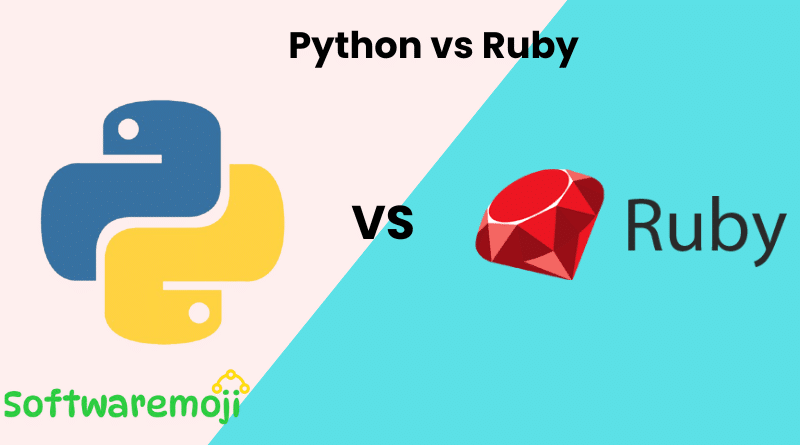
👉Python vs Ruby: Key Differences, Features, and Applications
Python vs Ruby: Python and Ruby are two prominent programming languages, each known for their strengths in different domains. While Python excels in data science, AI, and backend development, Ruby is popular for web development with its powerful Ruby on Rails framework. Python vs Ruby Let’s explore their key differences, features, pros, and cons in detail.
👉What is Python?
Python vs Ruby Python is a high-level, object-oriented programming language known for its simplicity and readability. Its dynamic binding, rich library support, and modularity make it an ideal choice for rapid application development, data science, and automation.
Key Features of Python:
- Easy-to-learn syntax, ideal for beginners and experts alike
- Offers extensive libraries for machine learning, AI, and data analysis
- Supports multiple inheritance
- Ideal for scientific computing, academic projects, and web development
- Provides automatic garbage collection
- Highly compatible with Java, C, and C++
Popular Applications of Python:
- Data Science and Analytics
- Web Development (Django, Flask)
- Machine Learning and AI
- Automation and Scripting
- Scientific Research Tools
Advantages of Python: ✅ Simple and clean syntax for faster development ✅ Extensive library support for various domains ✅ Strong community and excellent documentation
Disadvantages of Python: ❌ Slower performance in mobile app development ❌ Dynamic typing may lead to runtime errors ❌ Limited for building complex mobile applications
👉What is Ruby?
Python vs Ruby: Ruby is a dynamic, open-source programming language known for its clean syntax and flexibility. Ruby follows a pure object-oriented programming model and is widely recognized for web development due to the Ruby on Rails framework.
Key Features of Ruby:
- Focuses on developer productivity and simplicity
- Offers powerful built-in functions for faster development
- Highly scalable, making it ideal for building large web applications
- Supports only single inheritance
- Encourages writing software that is easy to read and maintain
Popular Applications of Ruby:
- Web Development (Ruby on Rails)
- Building Internet and Intranet Applications
- Functional Programming
Advantages of Ruby: ✅ Simple and expressive syntax ✅ Open-source language with a strong community ✅ Efficient for building web applications quickly
Disadvantages of Ruby: ❌ Difficult to debug tasks in Ruby ❌ Limited use cases outside web development ❌ Declining popularity compared to Python
👉Key Differences Between Python and Ruby
| Aspect | Python | Ruby |
| Created By | Guido Van Rossum (1991) | Yukihiro Matsumoto (1995) |
| Main Use | Data Science, AI, Web Development | Web Development, Functional Programming |
| Inheritance | Supports multiple inheritance | Supports single inheritance |
| Readability | Clear and explicit syntax | Elegant but may be harder to debug |
| Community Support | Strong, with a focus on innovation | Stable but slower innovation |
| Libraries | Extensive libraries for multiple domains | Limited libraries outside web development |
| Learning Curve | Easier to learn for beginners | Steeper learning curve |
| Salary (US Avg.) | ~$120,255/year | ~$134,029/year |
👉Sample Code Comparison: Python vs Ruby
Python Code Example:
# Python count to 10
i = 0
num = 11
while i < num:
print(“Inside the loop i = ” + str(i))
i += 1
Ruby Code Example:
# Ruby count to 10
$i = 0
$num = 11
while $i < $num do
puts(“Inside the loop i = #$i”)
$i += 1
end
👉Which Language Should You Choose?
- Choose Python if you aim to work in data science, AI, backend development, or automation.
- Choose Ruby if your primary goal is web development and you prefer an expressive, flexible language like Ruby on Rails.
In many cases, developers combine Python for backend logic and Ruby for web development to create efficient, scalable applications. Depending on your project goals, skills, and preferred coding style, both languages offer powerful capabilities for modern software development.
